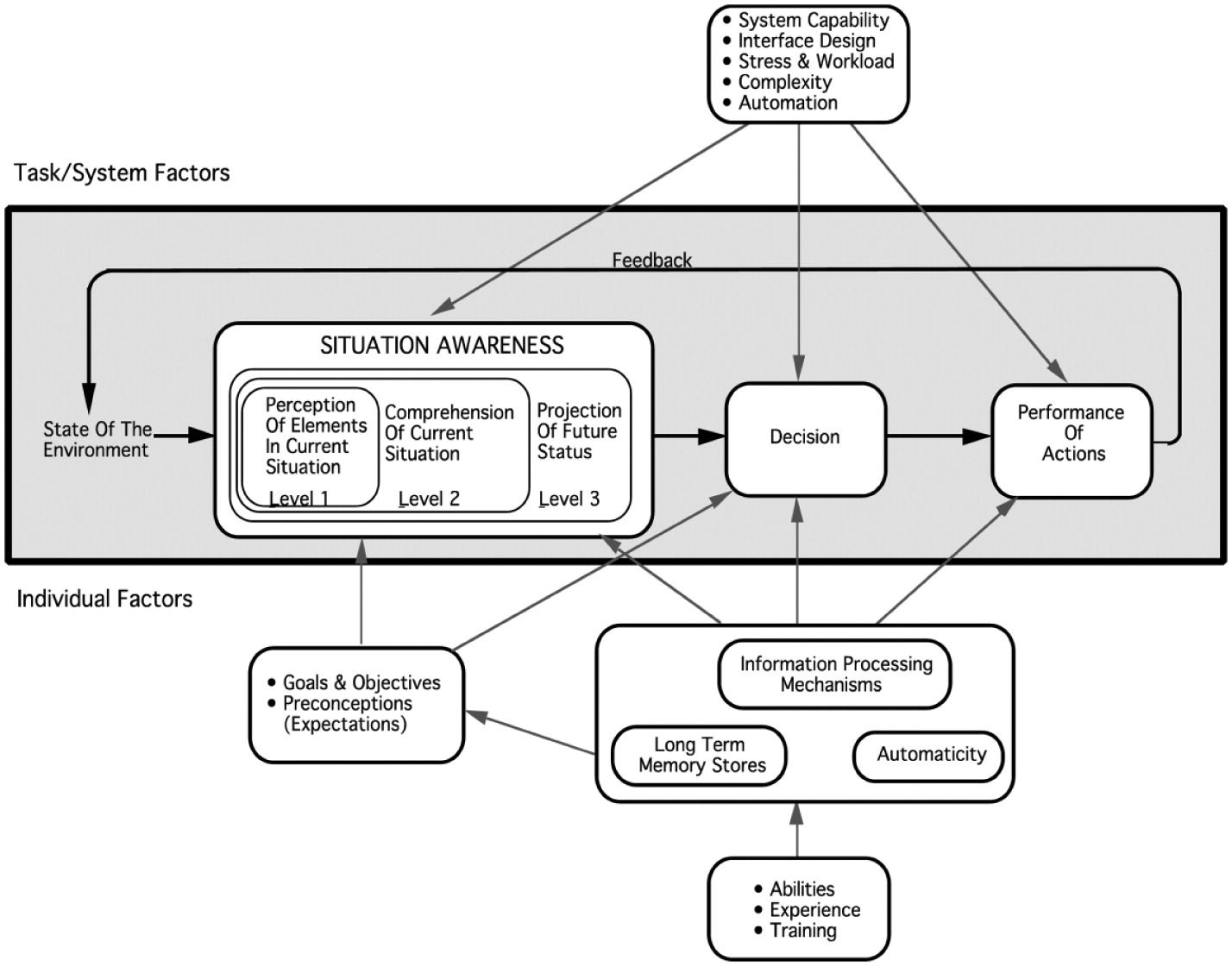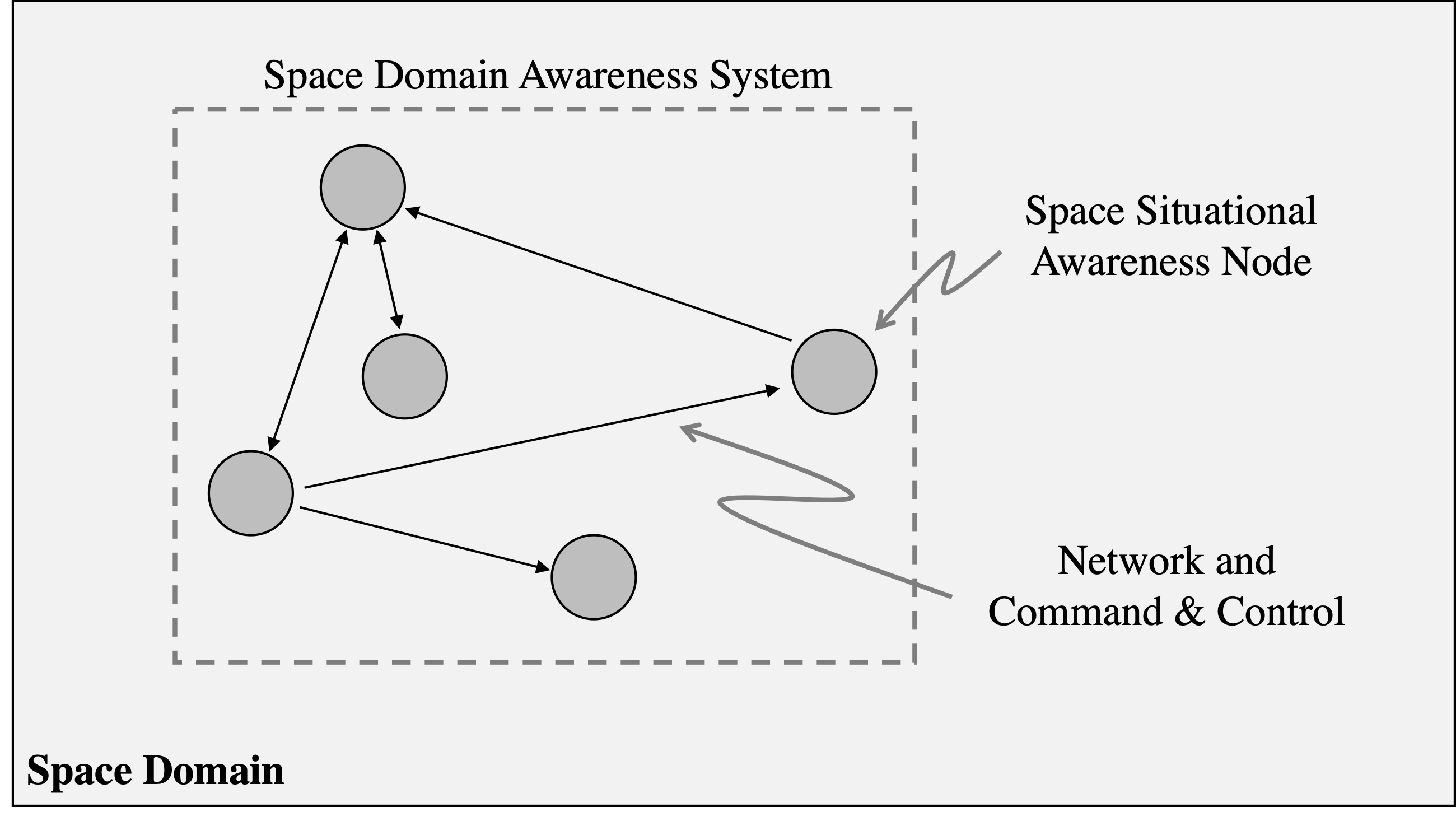Space Situational or Domain Awareness? Know the Difference!
Space Situational Awareness and Space Domain Awareness are often confused. What's the difference?

Decision-making and understanding within the Space Domain are becoming more necessary and complex for operators as spacecraft and debris proliferate within LEO, GEO, and the vicinity of the Moon. To understand and make decisions within space, operators must possess knowledge of what did, has, or may occur in space. Space Situational Awareness and Space Domain Awareness are often used to describe this enabling knowledge. It is surprisingly easy to confuse these terms, and I'm often asked to clarify them! Which is which, what are the differences, and how are they related?
Space Situational Awareness (SSA) is local and operator-specific; it is focused on enabling decision-making for operations of a single or small formation / constellation of space objects in the Space Domain. Space Domain Awareness (SDA) is the detection, tracking, characterization, and understanding of a fusion of multiple space situational awareness activities within the Space Domain, and facilitates decision-making at the domain scale.
To unravel this ball of yarn, we must 1) review the history of Situational Awareness in non-space applications, 2) consider how to apply Situational Awareness to space, 3) review Space Domain Awareness, and 4) discuss how Situational and Domain Awareness are related within the Space Domain.
Let’s get to it.
1) What is Situational Awareness?
Endsley's Situational Awareness Loop
Discussion of Situational Awareness and the Situational Awareness loop must begin with Dr. Mica Endsley’s models.
Situational Awareness research began in earnest nearly 35 years ago in 1988. While there were many contributors, Endsley's model has achieved dominance in nomenclature and usage.
Below, we see a diagram of Endsley's Situational Awareness loop (1995). A dominating feature is the central box labeled 'Task / System Factors' containing a feedback loop.
After achieving Situational Awareness (or understanding), actors can engage in Decision-Making, then Performance of Actions. Outcomes then further affect Situational Awareness.

The loop represents an ongoing continuous relationships between performing actions, making decisions, and maintaining Situational Awareness.
This Situational Awareness model is generalized from specific tasks - it is intended to be applicable to a wide variety of systems.
"[Situational Awareness] grew quickly from its initial start in aviation to many disparate fields including air traffic control, military operations, transportation, power systems, law enforcement, emergency management, health care, space, transportation, education, mining, and oil and gas operations." (Endsley, Situation Awareness Misconceptions and Misunderstandings, 2015)
Much can be said about the different elements of Situational Awareness. Let's save that topic for another time.
Let's review some Situational Awareness qualities so we can compare it more fully to Space Domain Awareness.
Situational Awareness for Individuals & Small Groups
Traditionally, Situational Awareness is applied to small groups working as a team or individuals.
Automobile drivers exercise knowledge-gathering to attain Situational Awareness by observing the road ahead, checking mirrors, and inferring intent of other drivers. Aircraft pilots do the same. They scan the sky, communicate as needed with air traffic control or other pilots, and pay close attention to their flight instruments.
Astronauts (and their operations teams) also engage in Situational Awareness during Extra-Vehicular Activities (EVAs).
One conclusion to draw from these examples are that Space Situational Awareness is fundamentally a local affair. It is an endeavor consisting of individuals attempting to obtain knowledge of their surroundings to enable local understanding and decision-making.
A corollary of the local and individual / small group scope is that Space Situational Awareness is operator-specific. Because their knowledge collection and understanding are intended to make local decisions, an efficient Space Situational Awareness system is generally optimized to meet that operator’s needs.
Dependence on Cognitive Engineering
Because humans are ultimately involved in decision-making and performing actions, we must consider them as parts of any Situational Awareness model.
Cognitive load, working memory, and user interfaces are just a few of the elements to consider. At the risk of running too far out of my area of expertise, I emphasize that cognitive engineering is generally under-appreciated, misunderstood, and initiated too late in most Situational Awareness system design processes.
But wait... this article is about space, and we've only discussed models and examples of Situational Awareness. Let's fix that.
2) Situational Awareness in Space
Space Situational Awareness (SSA) is simply Situational Awareness in the Space Domain.
One definition for Space Situational Awareness could be:
Space Situational Awareness is a local and operator-specific implementation of Situational Awareness with the primary Situational Awareness, Decision-Making, and Performance of Action activities focusing on events in space.
Until 2019, the United States Air Force (USSF) referred to its entire Situational Awareness segment operating in the space domain as Space Situational Awareness. This was regardless of how many systems, individuals, teams, and separate decision-making processes and levels were actually in place. As the space domain became more congested, contested, and competitive, the USSF Space Situational Awareness apparatus experienced substantial scope creep - both in terms of understanding what other actors were doing and making decisions for their own space-based assets.
In 2019 and coinciding with the establishment of the United States Space Force (USSF), change was overdue. The term for this function officially changed to Space Domain Awareness.
Why is Space Domain Awareness the new preferred term for what the USSF actually does?
Let's peel another layer off this onion.
3) Space Domain Awareness Definitions
In another article, Space Domain Awareness is defined as:
”Space Domain Awareness (SDA) includes detection, tracking, characterization, and understanding of objects and actors within and acting upon the space domain now, in the past, and in the future. The purpose of SDA is to enable timely, quality decision-making at the tactical, operational, and strategic levels for all instruments of national power.” (The Space Domain Awareness Definition You Wish You Had)
Is Space Domain Awareness just Space Situational Awareness on steroids? Is it just a distributed version?
4) How are Space Situational and Domain Awareness Related?
Are we really talking about a difference of scope between the two? It's not quite that simple.
After careful reading, some differences between Space Situational Awareness and Space Domain Awareness jump out:
- Locality: Is the perception / sense-making / Situational Awareness local or does it span the Space Domain?
- Decision-Making: Are decisions being made for a single system, formation, or constellation, or for a system-of-systems across a domain?
- Scope: What is the timespan of the decisions being made? Tactical? Operational? Strategic?
Isn't Domain Awareness Really Distributed Situational Awareness?
We need to take a brief tangent to introduce Distributed Situational Awareness. It is defined as:
"[Situational Awareness] in teams in which members are separated by distance, time and/or obstacles" (Endsley & Jones)
Is this the same as Space Domain Awareness?
I don't think it is. Distributed Situational Awareness is more about the physical locations of a single team supporting a single task / system Situational Awareness. It does not approach the scale of what the USSF calls Space Domain Awareness.
Distributed Architecture and Fusion of SSAs
To discuss their differences, it can be useful to see how Space Domain Awareness may be considered a distributed and sometimes hierarchical fusion of individual Space Situational Awareness 'nodes.'
Functionally, Space Domain Awareness begins to appear when multiple Space Situational Awareness nodes are fused together, generally over a network. Space Domain Awareness is the outcome when several asynchronous Space Situational Awareness nodes share data, evidence, and knowledge.

This network could theoretically take many forms. It could be centralized, federated, fully distributed, or something else. In any event, Space Domain Awareness is, as articulated by Gen. Shaw et al. in Sailing the New Wine-Dark Sea, 'supraglobal.'
More Than the Sum of Situational Awarenesses
Space Domain Awareness is more than the sum of individual contributing Space Situational Awareness nodes.
Two features of a Space Domain Awareness implementation conspire to make this so:
- Networking Effect: This famous effect simply states that the complexity of a system scales geometrically with the number of individual nodes. This fundamental principle is at the heart of our models of how brains work.
- Command and Control (C2): The introduction of a C2 structure on the network means that decision-making can occur simultaneously, asynchronously, and (with commander intent) despite network disruptions or failures. C2 enables hierarchical understanding and decision-making. C2 tree hierarchies (like the chain of command) introduce decision-making that scales logarithmically with the size of the C2 organization.
These features - Networking and C2 - generate emergent geometric and logarithmic capability scaling that is more than the sum of the individual Space Situational Awareness nodes.
Tactical, Operational, and Strategic Decision-Making
When Networking and hierarchical C2 are combined into a functioning whole (easier said than done), the understanding gained in Space Domain Awareness enables decision-making on higher levels and longer timescales.
Networking and C2 introduce hierarchical decision-making, uplifting from simple local decision-making at the tactical level to operational theaters or even astro-strategic decision-making.
Certainly, individual nodes can still locally understand their situation (perhaps augmented by other nodes), and make local - tactical - decisions on timelines consistent with system mission objectives.
Further, groups of assets within regions of space (e.g., LEO, GEO, Cislunar) may be able to gain sufficient awareness and understanding to make decisions as a coherent whole at the operational or theater level over longer timelines.
Looking to go higher? With a supraglobal or whole-of-Space Domain Awareness, sound decision-making can occur at the strategic and long-term levels.
We've covered a lot of ground. Let's wrap up.
Summary
Our tour through Situational Awareness, Space Situational Awareness, and Space Domain Awareness has identified three primary differences between Space Situational Awareness and Space Domain Awareness.
Primary Difference 1: Locality
- Space Situational Awareness is concerned with gaining understanding of a bubble of activity affecting decision-making for a single system / task.
- Space Domain Awareness endeavors to achieve understanding of the entirety of the Space Domain to enable decision-making across the whole domain.
Primary Difference 2: Decision-Making
- Space Situational Awareness enables decision-making for individual tasks / systems.
- Space Domain Awareness networking and command & control allows decision-making for systems of systems spanning the space domain.
Primary Difference 3: Scope
- Space Situational Awareness concerns itself with supporting decision-making driven by mission-specific scope and timeline.
- Space Domain Awareness can leverage networking and hierarchical command and control to make decisions at increasing organizational levels, including tactical, operational, and strategic.
Subscribe to the Newsletter
If you enjoy this content, show your support by subscribing to the free weekly newsletter, which includes the weekly articles as well as additional comments from me. There are great reasons to do so and subscriptions give me motivation to continue writing these articles! Subscribe today!


